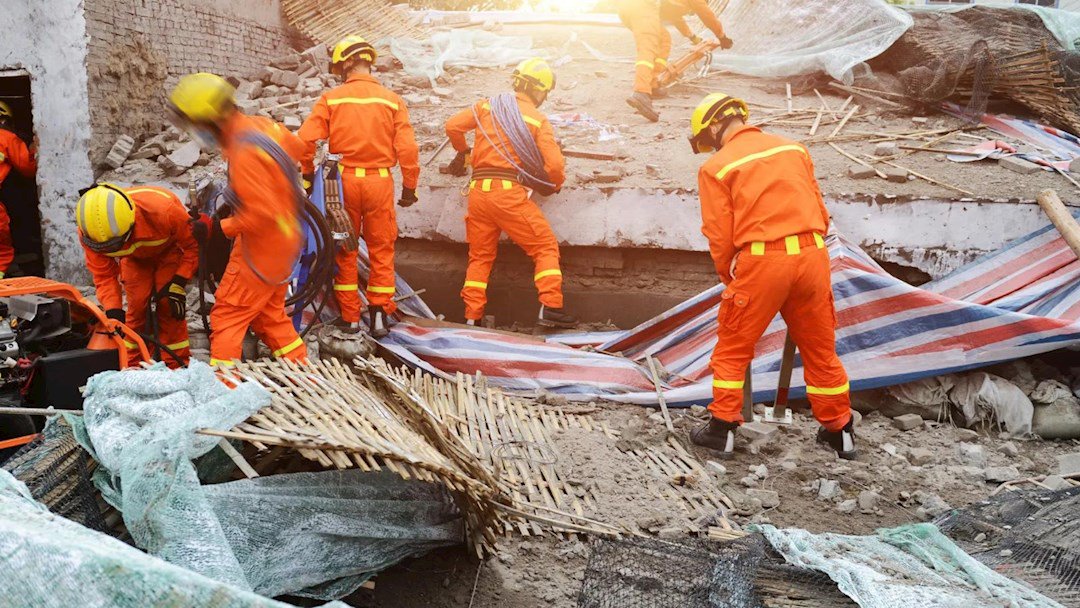
Over the past decade, the frequency and intensity of natural disasters has increased dramatically, especially in California, driven largely by the effects of climate change. From devastating wildfires to unprecedented flooding, a cascade of environmental challenges have disrupted lives and had severe impacts on buildings and infrastructure.
Significant concerns have arisen about the long-term health impacts on communities in the most severely affected areas due to the potential release of contaminants from impacted buildings and structures and the overall adverse impacts on air quality and the environment. This article discusses the connection between climate change, natural disasters, and the resulting public health and environmental impacts on affected communities.
Areas such as California that have a Mediterranean climate — characterized by wet winters and dry summers — have a higher susceptibility to wildfires and droughts. However, climate change has exacerbated these conditions, creating a perfect storm for natural disasters.
- Rising global temperatures have led to prolonged droughts, reduced snowpack in the Sierra Nevada mountains, and caused earlier spring snowmelt, all of which contribute to drier vegetation and increased wildfire risk.
- Simultaneously, warmer air holds more moisture, leading to more intense and unpredictable rainfall during the wet season, which can result in catastrophic flooding.
This risk is also becoming more prevalent in less expected areas, such as Colorado, highlighting the impacts of climate change on a broader scale.
Industrial Hygiene, Environmental Concerns, and Contaminant Release
The increase in natural disasters has created significant challenges, particularly regarding the release of hazardous materials from impacted or damaged buildings and infrastructure. Industrial hygiene focuses on identifying and mitigating environmental hazards to protect human health. In the context of natural disasters, industrial hygiene includes addressing the release of contaminants, such as asbestos, lead, mold, particulate matter, and volatile organic compounds (VOCs), from damaged structures.
1. Asbestos: A Persistent Threat
Asbestos, a fibrous mineral once widely used in construction for its fire-resistant and insulating properties, is one of the most dangerous materials released from damaged structures during disasters. Although its use has been heavily regulated since the 1980s, many buildings still contain asbestos in materials such as insulation, roofing, flooring, and other materials.
Significant exposure to asbestos fibers can lead to serious health conditions, including asbestosis, lung cancer, and mesothelioma.
- Wildfires: When buildings sustain fire damage, asbestos-containing materials can be damaged and release microscopic asbestos fibers into the air. Significant amounts of asbestos can potentially be released into the air as thousands of structures burn during the rapid spread of wildfires. Released asbestos creates health risks for first responders, cleanup crews, and returning residents.
- Floods: Floodwaters can damage asbestos-containing materials, causing them to deteriorate and release fibers into the air.
Additionally, the demolition of fire- or flood-damaged buildings can further disturb asbestos, putting emergency responders, workers, and residents at risk.
2. Lead-Based Paint: A Legacy of Older Construction
Lead, another hazardous material commonly found in older buildings, was sometimes used in paint manufactured before 1978. When buildings are damaged or destroyed, lead dust can be released into the environment, posing serious health risks, especially to children.
- Wildfires: The intense heat of wildfires can vaporize lead-based paint and other lead-containing materials, dispersing lead particles into the air and soil.
- Floods: Floodwaters can cause significant damage to lead-containing materials. Damaged lead-based paint or lead-containing materials can cause a release of lead dust, which in turn poses a health risk to individuals and contaminates the environment.
Lead exposure can cause neurological damage, developmental delays in children, and a range of other health problems. The release of lead during disasters exacerbates these risks, particularly in communities with older housing stock.
3. Mold: A Consequence of Water Damage
Mold growth is a major issue following floods and water damage. Mold thrives in damp environments and can colonize in building materials such as drywall, insulation, and wood.
- Health risks: Exposure to mold spores can cause respiratory issues, allergic reactions, and even infections in individuals with weakened immune systems. Prolonged exposure can lead to chronic health problems.
- Release during cleanup: Disturbing moldy materials during cleanup can release spores into the air, contaminating other areas and increasing exposure risks.
Significant flood events may lead to widespread mold growth in homes or commercial buildings, creating significant challenges for residents or building occupants.
4. VOCs and Chemical Contaminants
Modern buildings contain a variety of synthetic materials, such as plastics, adhesives, and treated wood, which can release hazardous chemicals when damaged or burned.
- Wildfires: Burning plastics, electronics, and other synthetic materials can release VOCs, benzene, dioxins, and other toxic chemicals into the air. These substances can cause acute and chronic health effects, including cancer and respiratory problems.
- Floods: Floodwaters can carry chemicals from industrial sites, agricultural areas, and households into surrounding areas, contaminating surfaces and leaving behind hazardous residues.
The release of these chemicals during disasters complicates cleanup efforts and poses long-term risks to both air and water quality.
5. Particulate Matter and Air Quality Degradation
The damage to structures and buildings caused during wildfires and floods contributes to the release of particulate matter into the air, including the release of fine particulate matter (PM2.5), which may penetrate the deeper regions of the lungs and cause significant respiratory issues.
- Wildfires: Smoke from wildfires impacting both vegetation and buildings contains fine particulate matter that can travel long distances, affecting air quality across regions. This particulate matter can carry toxic substances, amplifying health risks.
- Floods: Dust generated during the cleanup and demolition of flood-damaged buildings can contain hazardous materials, contributing to poor air quality.
Poor air quality during and after disasters has been linked to increased hospitalizations for respiratory and cardiovascular conditions, particularly among vulnerable populations, such as children, the elderly, and those with pre-existing health conditions.
Addressing the Contaminant Risk
The release of hazardous materials from buildings during natural disasters will increasingly become a major issue for populations, such as those in California and Colorado, as natural disasters linked to climate change increase in frequency. Asbestos, lead, mold, fine particulate matter, and other chemical contaminants pose significant risks to human health and the environment, complicating recovery efforts and creating long-term challenges.
Addressing these issues requires a greater understanding and awareness of the hazards posed by these contaminants, so appropriate planning and action can take place to increase resiliency in the face of climate-related threats and protect the health and wellbeing of the public.
Partnering with a provider that offers risk mitigation solutions and understands the nuances within the construction industry can be paramount in ensuring losses are minimal, protecting employees, businesses, and reputations. At Gallagher Bassett, our tenured professionals build trusting and collaborative partnerships with clients for tailored solutions that improve cost savings, efficiency, communication, and control throughout a project lifecycle.
Furthermore, our team is comprised of multi-disciplined technical specialists who provide superior environmental consulting services at every stage of a project's lifecycle. And because we own the totality of our solutions, we remove the need to seek additional vendors or third parties for a project, allowing us to limit the impact of risk and achieve better outcomes.
Contact us to learn more about Gallagher Bassett's environmental consulting services or to discuss your next project.
Author

Eric Telemaque
Make Gallagher Bassett your dependable partner
When making the right decision at the right time is critical to minimize risk for your business, count on Gallagher Bassett's extensive experience and global network to deliver.

